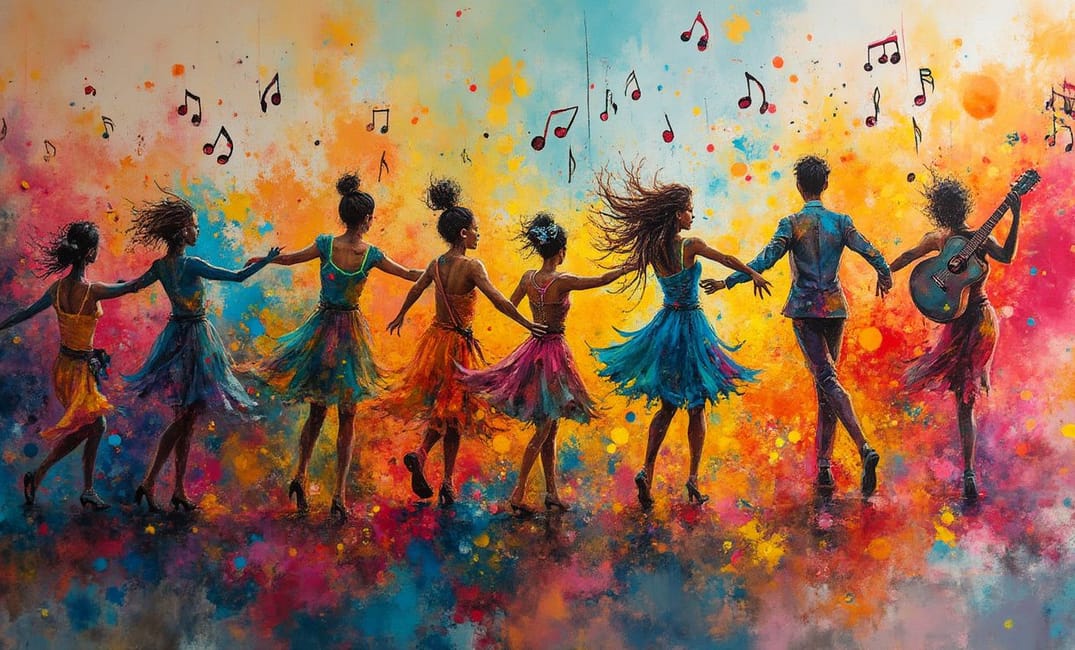Introduction: The Harmonious Clash of Art and Activism
Art and music have always served as powerful catalysts for social change, providing platforms for voices that might otherwise remain unheard. These artistic expressions transcend language and cultural differences, forging emotional connections that motivate societal transformation. Throughout history, artists and musicians have used their craft to challenge norms, confront injustices, and create dialogues around pressing social issues. In this entry, we explore how art and music have influenced social movements, capturing the essence of human resilience and hope in times of upheaval and transformation.
Art as a Medium for Social Change
Visual Art: Painting the Canvas of Revolution
- Iconic Symbols of Resistance: Artists often create powerful imagery that embodies resistance and calls for change. Consider the works of Francisco Goya, whose depictions of war's horrors, or the politicized murals of Diego Rivera, resonate with the struggles of the oppressed, urging societies to confront uncomfortable realities.
- Street Art and Graffiti: The streets have become canvases for activism, with graffiti and murals serving as public announcements of dissent and hope. Artists like Banksy use visual storytelling to critique political issues and illustrate social injustices, making inaccessible topics visible to all.
Film and Photography: Capturing Moments of Revolt
- The Role of Photography in Social Awareness: Photographers like Dorothea Lange and Lewis Hine have documented profound moments of social struggle, capturing the faces and lives affected by economic depression and labor exploitation. These images, poignant and raw, create empathy and awareness, often igniting public support for reform.
- Cinema as a Tool for Transformation: Filmmakers utilize the medium to challenge social paradigms and highlight human rights imperatives. Films like "To Kill a Mockingbird" and "Selma" address racial tensions and inequality, inspiring discussions and evoking emotional responses that drive collective action.
Music as the Soundtrack of Revolt
Songs of Freedom and Protest
- Anthems of Civil Rights: Music has been integral to movements by offering rallying cries for change. The U.S. Civil Rights Movement harnessed the power of songs like "We Shall Overcome" and "The Times They Are A-Changin'," which galvanized supporters and provided solace amidst adversity.
- Music Against Apartheid: South Africa's struggle against apartheid was punctuated by musicians like Hugh Masekela and Miriam Makeba, who used their art to amplify international attention and solidarity against racial oppression, becoming cultural beacons of unity and resistance.
The Fusion of Music and Identity
- Hip Hop and Urban Expression: The genre of hip hop emerged from marginalized communities, blending rhythm and poetry to express identity, struggle, and aspiration. Icons like Tupac Shakur and Public Enemy empowered generations through lyrics that dissect socio-economic disparities, systemic racism, and resilience.
- Reggae and Consciousness Raising: Reggae music, with artists like Bob Marley, blends rhythm with messages of love, unity, and social justice. Its transcendent melodies and profound lyrics provide international outreach, fostering consciousness and empowerment across diverse audiences.
Collaborative and Cross-Cultural Influences
The Globalization of Art and Activism
- Transnational Artistic Collaboration: Across borders, artists have united in common causes, creating impactful works that transcend national issues. The global protests against climate change see artists producing multimedia experiences, from visual arts to performance, promoting environmental advocacy and sustainability globally.
- Cultural Festivals as Grounds for Social Dialogue: Events like the Edinburgh Festival and Burning Man delve into issues of culture, identity, and sustainability, serving as hubs for diverse artistic expression and intercultural dialogue that highlight social causes and foster understanding.
Digital Platforms: New Frontiers for Activism
- Social Media and Artivism: With platforms like Instagram and Twitter, artists reach global audiences, igniting movements like #BlackLivesMatter. Digital art galleries and virtual concerts have democratized access to activism, empowering individuals to engage in discourse and support change from screens across the world.
- Virtual Reality and Immersive Experiences: Emerging technologies, such as virtual reality, offer immersive platforms for social expression. Art installations and musical performances in digital spaces provide visceral journeys into issues like migration, inequality, and war, cultivating empathy and transformative experiences.
Conclusion: Harmonizing Art, Music, and Social Progress
As society evolves, art and music will continue to wield the power to unite, inspire, and motivate collective action toward social change. Their universal appeal and ability to transcend barriers make them unparalleled forces in shaping public consciousness and pioneering movements. Embracing the artists and musicians who challenge, inform, and inspire ensures that humanity's story is one of progression, resilience, and hope—a testament to creativity’s enduring ability to amplify our voices and chart the course toward equity, justice, and profound transformation.
"In the symphony of resistance, where brushstrokes and notes rise together, art and music create harmonious reverberations, weaving hope and change into the fabric of society."
MUSIC, ART, MUSIC PROTEST, SOCIAL MOVEMENTS, RESISTANCE, VISUAL ART, SOCIAL CHANGE, CULTURAL INFLUENCE, GLOBALIZATION, ACTIVISM

